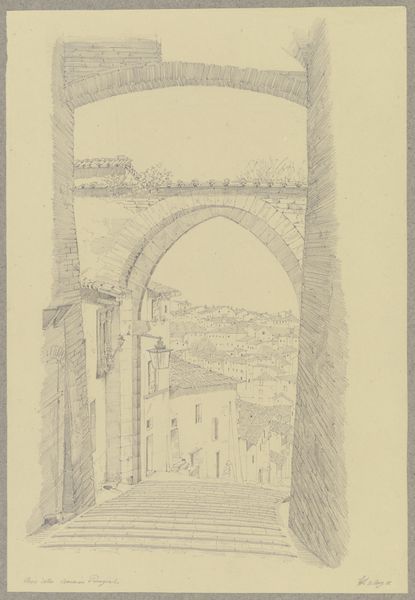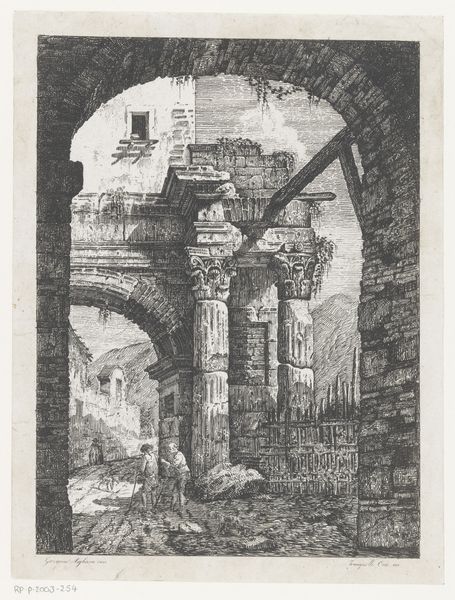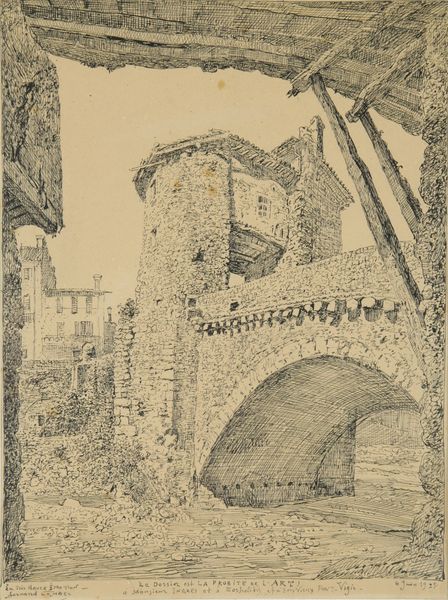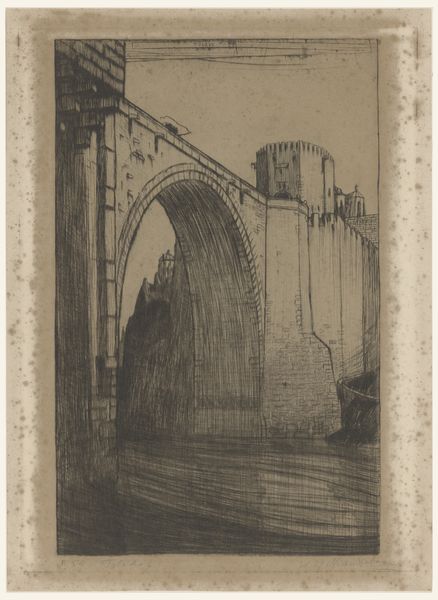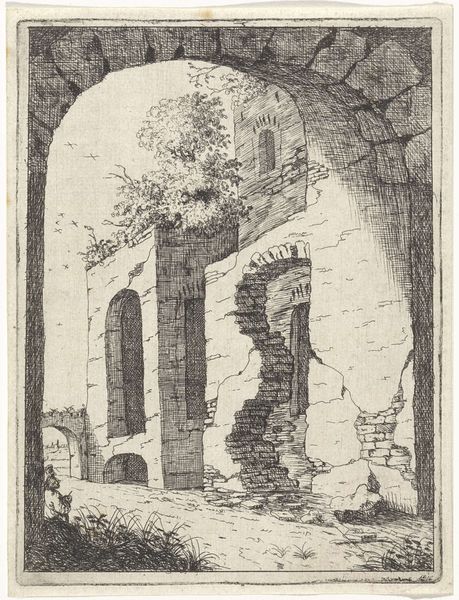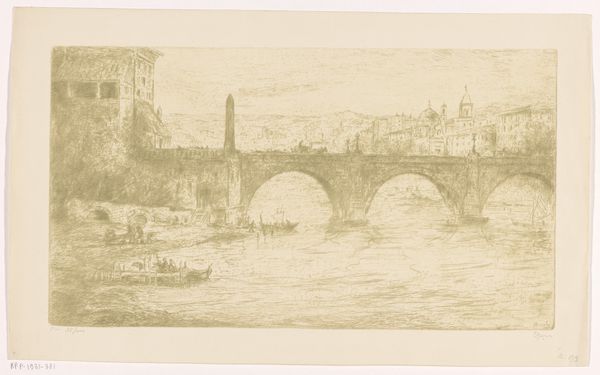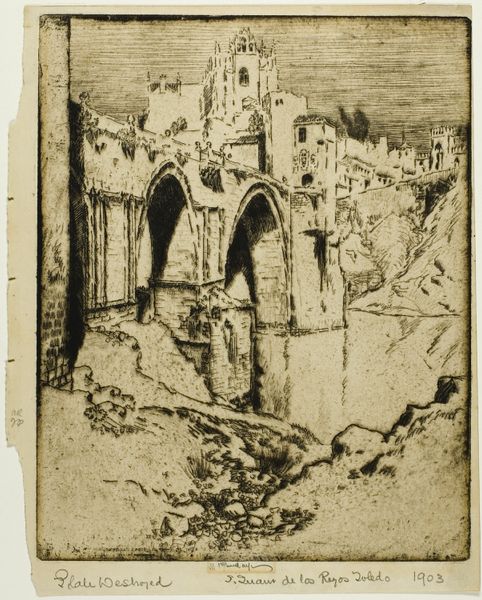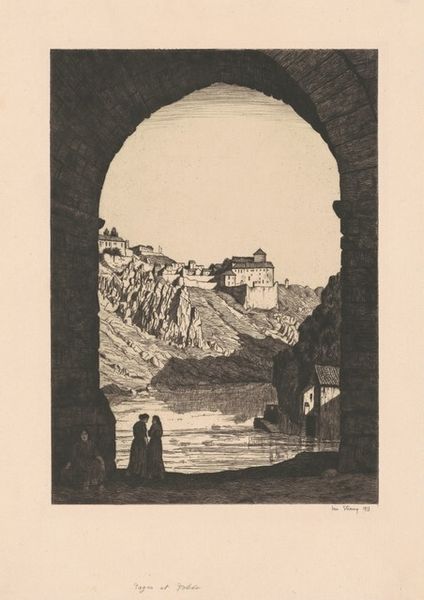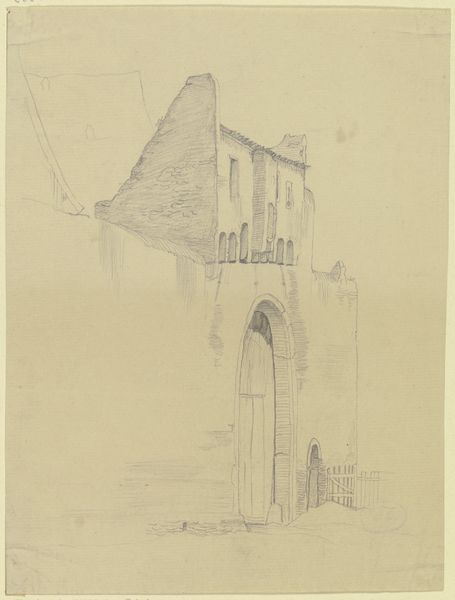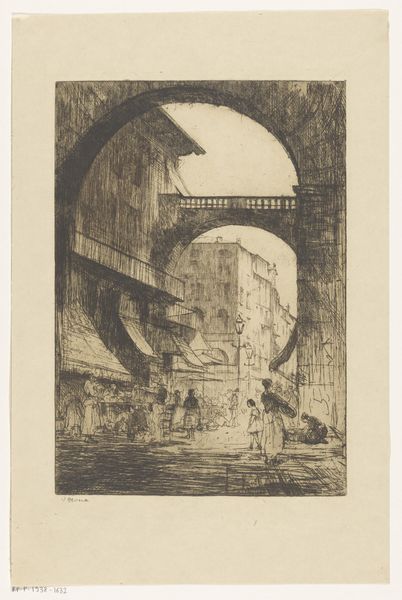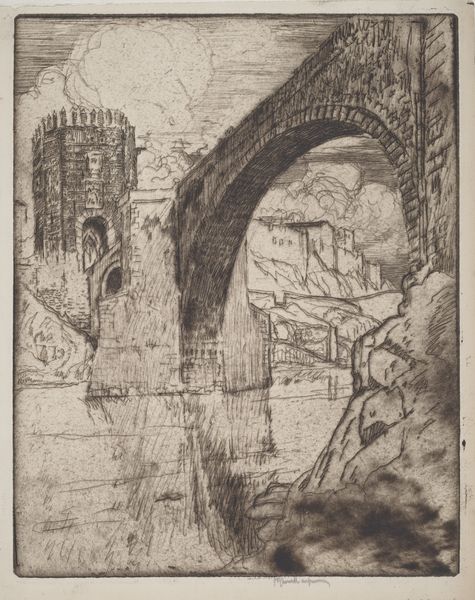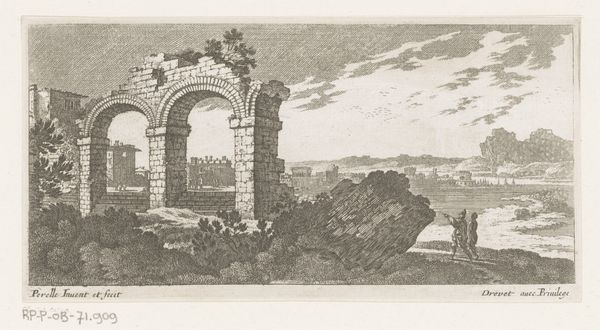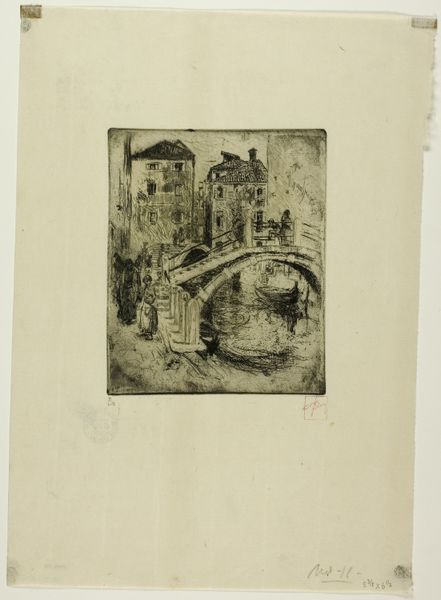
drawing, print, etching
#
drawing
#
art-nouveau
#
dutch-golden-age
# print
#
etching
#
landscape
#
etching
#
geometric
#
cityscape
Dimensions: height 236 mm, width 183 mm
Copyright: Rijks Museum: Open Domain
Editor: This etching, "Ponte Pietra over de rivier de Adige in Verona" by Wijnand Otto Jan Nieuwenkamp, created in 1911, is quite captivating. The way the artist depicts the bridge, and the town rising up behind it, has a lovely rhythmic quality. How would you interpret this piece from a formal perspective? Curator: From a formalist point of view, I find the composition most compelling. Notice how the strong diagonal of the bridge contrasts with the verticality of the architecture and foliage on the hill. It's a careful balance. Observe how the geometric shapes of the bridge’s arches are echoed, albeit in a more complex way, by the structures in the town. The artist clearly establishes a dialogue between the man-made and the natural environment through these compositional echoes. What do you make of the texture created by the etching technique? Editor: I see what you mean about the relationship between the town and bridge being emphasized by shape similarities. I am noticing now how the artist seems to utilize line to describe and shape, which, when observing closer, it also directs our viewing. The crisp lines used really add to that structural quality. Curator: Precisely. The lines articulate the textures, and are quite effective to depict light and shadow. Also notice how the foreground is darker in tone to guide us into the lighter background of the architectural hill town? What might you consider next about the relationship with positive and negative spaces of this artwork? Editor: That's something I hadn't considered yet. Thank you for the added context. It shows how all the parts play into how you read it. Curator: Indeed, observing the artwork through the language of formalist traits, our focus shifts from any contextual interpretations to examining how line, shape, space, and technique produce unique perspectives.
Comments
No comments
Be the first to comment and join the conversation on the ultimate creative platform.
